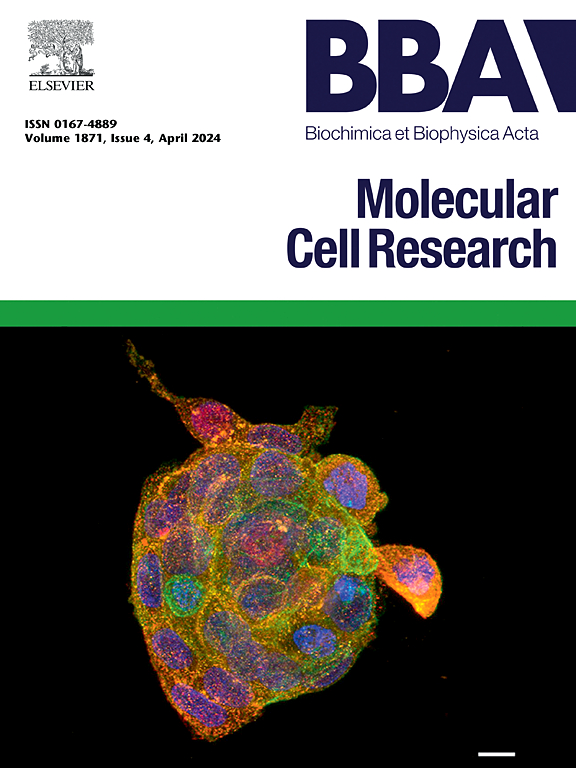A dynamin-like protein in Plasmodium falciparum plays an essential role in parasite growth, mitochondrial development and homeostasis during asexual blood stages
IF 4.6
2区 生物学
Q1 BIOCHEMISTRY & MOLECULAR BIOLOGY
Biochimica et biophysica acta. Molecular cell research
Pub Date : 2025-03-27
DOI:10.1016/j.bbamcr.2025.119940
引用次数: 0
Abstract
Malaria parasites harbour a single mitochondrion, and its proper segregation during parasite multiplication is crucial for the propagation of the parasite within the host. Mitochondrial division machinery consists of several proteins that associate with the mitochondrial membrane during segregation. Here, we have identified a dynamin-like protein in P. falciparum, PfDyn2, and deciphered its role in mitochondrial growth and homeostasis. A GFP targeting approach combined with high-resolution microscopy studies showed that the PfDyn2 associates with the mitochondrial membrane at specific sites during mitochondrial division. The C-terminal degradation tag mediated inducible knock-down (iKD) of PfDyn2 significantly inhibited parasite growth. PfDyn2-iKD hindered mitochondrial development and functioning, decreased mtDNA replication, and induced mitochondrial oxidative stress, ultimately causing parasite death. Regulated overexpression of a phosphorylation mutant of PfDyn2 (Ser-612-Ala) did not affect the recruitment of PfDyn2 on the mitochondria; normal mitochondrial division and parasite growth showed that phosphorylation/dephosphorylation of this conserved serine residue (Ser612) may not be responsible for regulating recruitment of PfDyn2 to the mitochondrion. Overall, we show the essential role of PfDyn2 in mitochondrial development and maintaining its homeostasis during the asexual cycle of the parasite.
求助全文
约1分钟内获得全文
求助全文
来源期刊
CiteScore
10.00
自引率
2.00%
发文量
151
审稿时长
44 days
期刊介绍:
BBA Molecular Cell Research focuses on understanding the mechanisms of cellular processes at the molecular level. These include aspects of cellular signaling, signal transduction, cell cycle, apoptosis, intracellular trafficking, secretory and endocytic pathways, biogenesis of cell organelles, cytoskeletal structures, cellular interactions, cell/tissue differentiation and cellular enzymology. Also included are studies at the interface between Cell Biology and Biophysics which apply for example novel imaging methods for characterizing cellular processes.

 求助内容:
求助内容: 应助结果提醒方式:
应助结果提醒方式:


